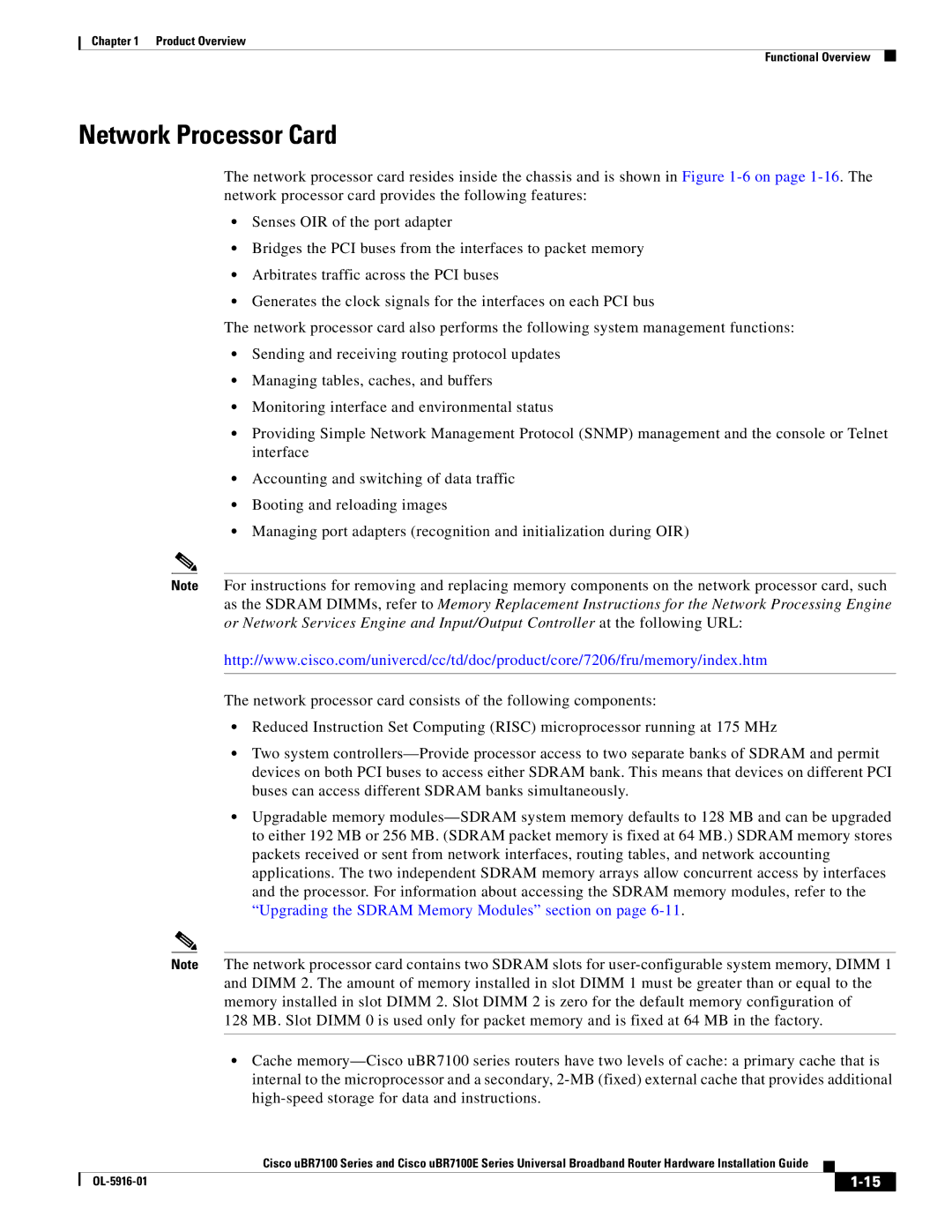
Chapter 1 Product Overview
Functional Overview
Network Processor Card
The network processor card resides inside the chassis and is shown in Figure
•Senses OIR of the port adapter
•Bridges the PCI buses from the interfaces to packet memory
•Arbitrates traffic across the PCI buses
•Generates the clock signals for the interfaces on each PCI bus
The network processor card also performs the following system management functions:
•Sending and receiving routing protocol updates
•Managing tables, caches, and buffers
•Monitoring interface and environmental status
•Providing Simple Network Management Protocol (SNMP) management and the console or Telnet interface
•Accounting and switching of data traffic
•Booting and reloading images
•Managing port adapters (recognition and initialization during OIR)
Note For instructions for removing and replacing memory components on the network processor card, such as the SDRAM DIMMs, refer to Memory Replacement Instructions for the Network Processing Engine or Network Services Engine and Input/Output Controller at the following URL:
http://www.cisco.com/univercd/cc/td/doc/product/core/7206/fru/memory/index.htm
The network processor card consists of the following components:
•Reduced Instruction Set Computing (RISC) microprocessor running at 175 MHz
•Two system
•Upgradable memory
Note The network processor card contains two SDRAM slots for
128 MB. Slot DIMM 0 is used only for packet memory and is fixed at 64 MB in the factory.
•Cache
Cisco uBR7100 Series and Cisco uBR7100E Series Universal Broadband Router Hardware Installation Guide
|
| ||
|
|
